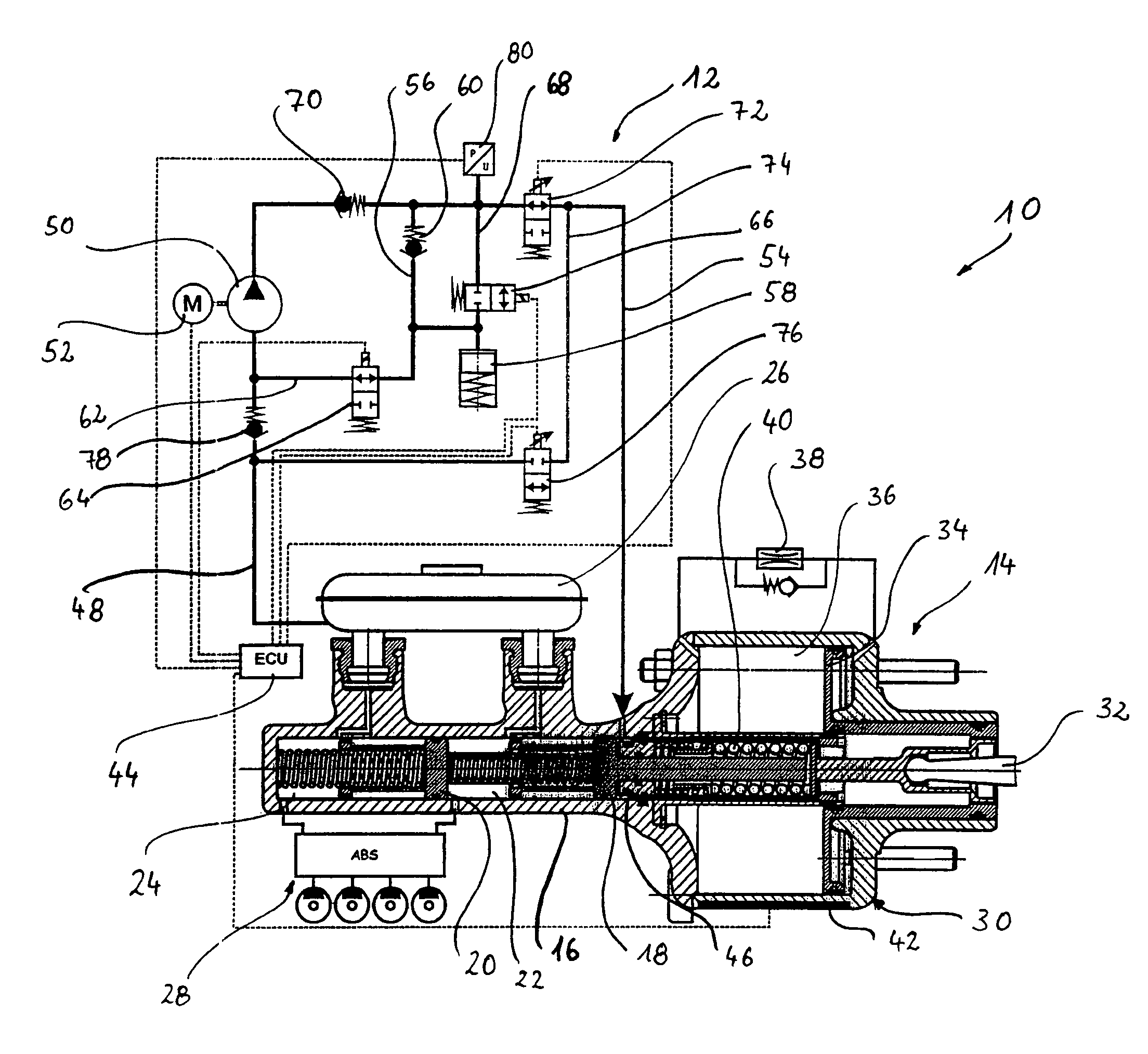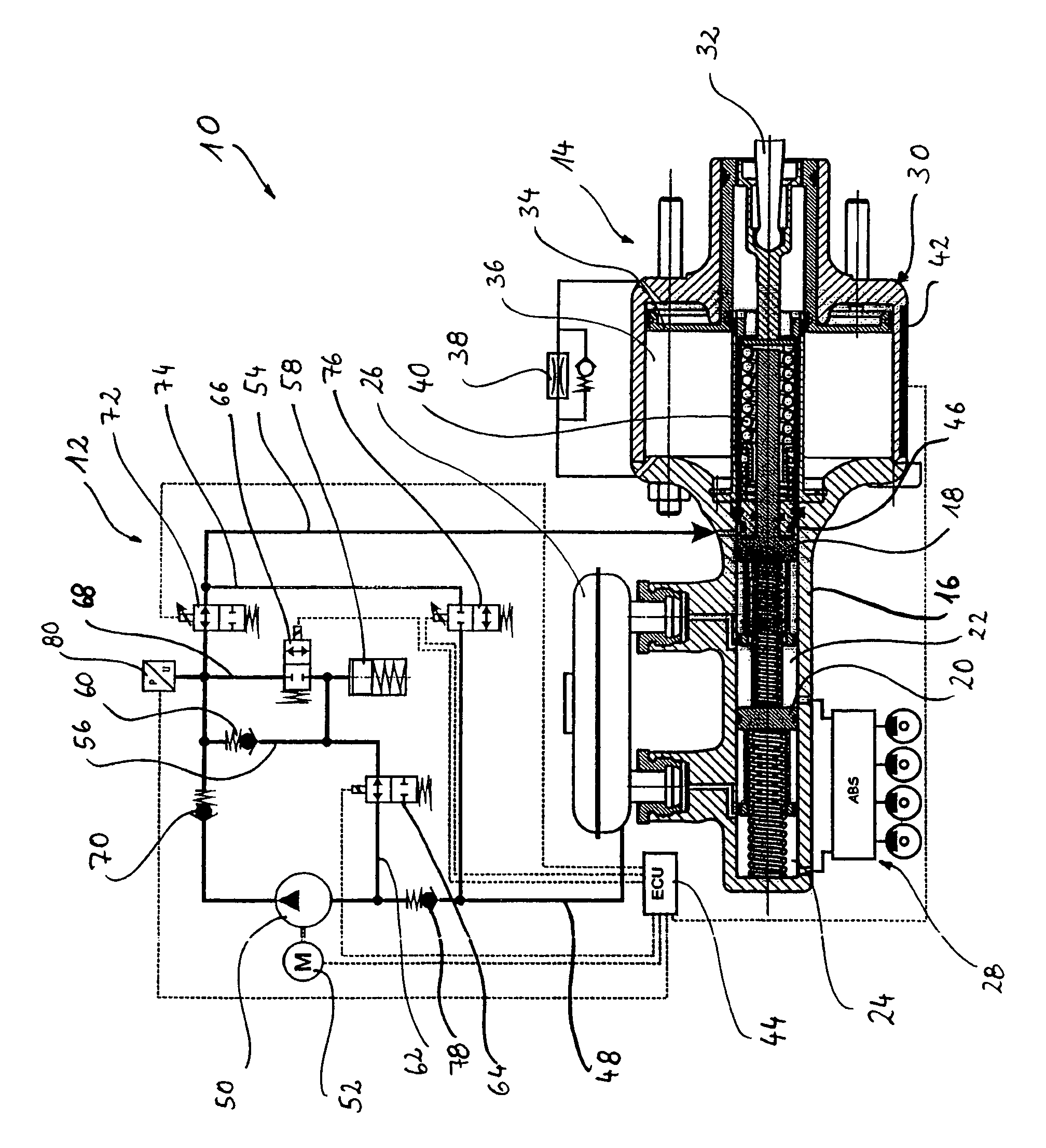Brake system for a motor vehicle
a technology for braking systems and motor vehicles, applied in braking systems, applications and release valves, brake components, etc., can solve the problems of increasing the cost of the braking system, the need for a pump to be constructed, and the relatively powerful, so as to achieve the effect of reducing pressure and building up
- Summary
- Abstract
- Description
- Claims
- Application Information
AI Technical Summary
Benefits of technology
Problems solved by technology
Method used
Image
Examples
Embodiment Construction
[0022]The FIGURE illustrates a braking system according to the invention which is generally designated 10. The system comprises a hydraulic circuit 12 which provides servo pressure and a brake cylinder assembly 14.
[0023]The brake cylinder assembly 14 comprises a main brake cylinder 16 in which a primary piston 18 is guided so as to be able to be displaced. A secondary piston 20 is further guided so as to be able to be displaced in the main brake cylinder 16 and is mechanically coupled to the primary piston 18 by means of a spring arrangement. The primary piston 18 comprises, with the main brake cylinder 16 and the secondary piston 20, a primary pressure chamber 22. The secondary piston 20 comprises, with the main brake cylinder 16, a secondary pressure chamber 24. The primary pressure chamber 22 and the secondary pressure chamber 24 are coupled in fluidic terms, via respective supply channels, to a hydraulic fluid reservoir 26 for supplying hydraulic fluid in the idle state illustra...
PUM
 Login to View More
Login to View More Abstract
Description
Claims
Application Information
 Login to View More
Login to View More - R&D
- Intellectual Property
- Life Sciences
- Materials
- Tech Scout
- Unparalleled Data Quality
- Higher Quality Content
- 60% Fewer Hallucinations
Browse by: Latest US Patents, China's latest patents, Technical Efficacy Thesaurus, Application Domain, Technology Topic, Popular Technical Reports.
© 2025 PatSnap. All rights reserved.Legal|Privacy policy|Modern Slavery Act Transparency Statement|Sitemap|About US| Contact US: help@patsnap.com


